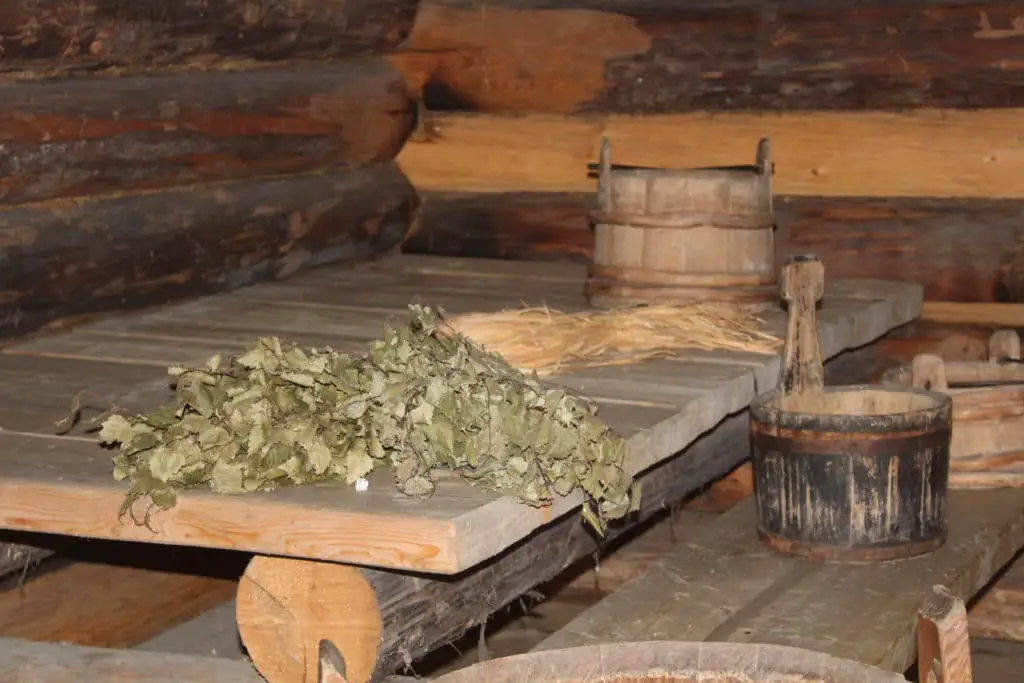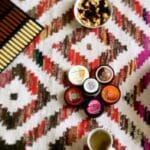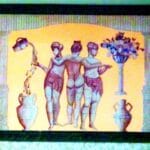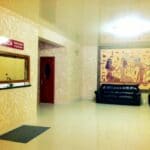Banya (a washing house) has remained a part of the Russian culture since ancient times, carrying all sorts of traditionally obtained meanings including religious, symbolic and medicinal. The banya was officially endorsed by the Soviets as a health facility and its use spread throughout Eurasia. It remains popular for health and recreation throughout the post-Soviet space. Here, we’ve compiled some of the banya reviews written by our students in Bishkek, Kyrgyzstan.
Kathryn Watt, 2019
Kathryn Watt is a Russian and Linguistics student of The University of Edinburgh. She is currently studying Russian language and Central Asian Studies with SRAS at the London School in Bishkek. Having grown up in beautiful Uzbekistan, she was delighted to return to Central Asia! In the future, she hopes to pursue a career in journalism, so getting exposure to language and culture has been an invaluable experience. When she’s not on the move, she’s sipping a cup of tea in bonny Scotland, running along the seashore, and developing her yoga practice.
Fighting jet lag, adjusting to new surroundings, and student life in general can be tiring. It’s important to take a break every now and then to get some TLC to keep your balance. Heading to a local spa for some self-care can be the perfect solution for an interesting cultural experience and some much-deserved relaxation!
I first visited С Легким Паром (“With Light Steam” – a Russian pleasantry that one says to someone using a steam bath) with my host sister. I enjoyed it so much that I returned a few weeks later with a friend.
Upon arriving you are expected to put on flip flops and get “changed.” Initially I put on a swimming costume but was soon told off by a spa attendant. It turns out that the protocol here is to spa in the nude – or, at most, draped in only a sheet!
Atmosphere
As I entered the spa complex, I felt like I had walked into a history book. Women of all ages wandered around draped in sheets as they passed from one treatment room to the next. It was clear that this was a place for catching up with family and friends.
Downstairs, the walls are lined with mosaic tiles, adding to the “Roman baths” ambiance. In the first room there is a cold pool with hydromassage beds. There are also picnic benches, a communal washing area, and entryways leading to various treatment rooms. The far-right entryway leads into a Turkish hammam – a large room with a giant mosaic pillar in the center, where I could lay for only a couple of minutes before feeling too cold and moving onto the next room. To the far-left is a steaming hot Russian banya – a much more enjoyable experience. A cold swimming pool is situated right by the banya, perfect for cooling off afterwards. A chandelier overhangs the carpeted stairway leading up to the second floor, where the hot Turkish hammam, scented sauna, and café can be found. This was the perfect place to go for a drink and something to eat in between treatments.
Services
At the café you can order national food, snacks, and drinks. There is even space to bring a picnic! You aren’t allowed to take drinks out of the café but upon request, you can leave them on a table and come back to them later.
Beauty treatments offered include massage, haircuts, manicures, facials, and peeling. The first time I went to this spa, I had an interesting experience with this! Not knowing what peeling was, I followed my host sister’s cue and went with a beauty therapist to an open room filled with stone tables. There, I was instructed to lie down, and an exfoliation treatment was carried out from head to toe. It felt odd to get an intensive beauty treatment in a communal room (especially considering the mirror on the ceiling) but this aside, my skin felt amazing afterwards.
Prices and Payment
The price for entry depends on the time and day. On Tuesdays, Wednesdays, Thursdays, and Fridays, from 8am to 5pm, the price for the first hour is about $3 and from 5pm to 10pm, it is about $4. On Mondays, Saturdays, Sundays, and holidays from 8am to 10pm, it is about $3. For every extra hour, an extra 50 cents is added and any beauty treatments or food bought inside are charged to your bill, to be paid at the end.
С Легким Паром is a high quality, well priced spa, perfect for unwinding at the end of a long week and catching up with friends. While it is more communal and open plan than many western spas, this simply adds to the cultural experience, making it ideal for weekend recreation in Bishkek.
Eirene Busa, 2013
Zhirgal Banya
Hours of Operation: Mon, Tues, Thurs: 9am-11pm, Wed: 12pm-11pm, Fri: 7am-11pm, Sat, Sun: 7am-11pm
Address: Corner of Ibraimov and Toktogul
Price: Adults: 250 Som, Kids (1-12 years old): 150 Som
Desperate times call for desperate measures. After finding out on May 13th that hot water would be turned off in Bishkek for the next month — as part of the annual maintenance of its heating systems — I decided now was as good a time as any to check out one of the local banyas, or Russian-style public bathhouse. Why not? There would be hot water there. Besides, I wasn’t mentally prepared that day to come home to a cold shower. If I was going to hurt that day, I decided it was going to be because I hit myself too hard with birch leaves.
I chose the banya that was closest to my apartment (and about a 30-minute walk from the London School) called Zhirgal Banya, located on the corner of Ibraimov and Toktogul. It’s the complex with the two large white domes. You can’t miss it.
As soon as I entered, I was greeted with a dim but clean marble lobby with black sofas and Greek and Kyrgyz murals. The place has the feel of a business hotel. To the left, there is an area to purchase bath products, from standard supplies such as shampoo and conditioner, to more Kyrgyz specialties like kalpaks, the national felt hat (to protect the head from intense heat in the sauna) and towels with Kyrgyz emblems. To the right is the cashier, where you pay your entrance fee and receive your locker key. It costs a cool five bucks for the whole day. After a woman on her cell phone mindlessly took my cash, she pointed me to a door that led to the women’s locker room. (Women and men are separated at the banya.) I schlepped over with my clunky school bag that had my laptop, transformer, recharging cord, iPhone, cell phone, my notebook, and all my other daily essentials. Here we go.
Walking into the locker room, I was met with a line-up of Kyrgyz babushkas who were chatting on a bench in front of the lockers. They immediately stopped talking. A woman at the door then promptly asked me for my receipt, which the cashier at the main entrance had given to me. “Oh, right!” I said. I fumbled through my wallet, self-consciously. I handed her an already crumbled square receipt. She gave me plastic slippers and a light “towel” – a bed-sheet like piece of material that is the standard dress code at a Russian banya. Mine was purple, a bit more colorful than the usual white that most use.
Then a bunch of coins fell onto the ground from my wallet. “Oh no!” I said a little too loudly. As I crouched down to pick up them up, she asked in Russian, “Where are you from?” A bit defeated, I looked up from the floor and said, “I’m from the States.” “Ahh.” I then stuffed all the coins into my bag and wandered away to look for my Locker #42. Behind me, I heard one of the babushkas ask the fee-collector in Kyrgyz, “Where is she from?” “She’s American.” “Ahh…”
After I found my locker, threw in my belongings, stripped, and wrapped myself in the bed sheet, I went to the bathing facilities. Here I found a scene of steam, hot splashing water, and the melodious sounds of the Kyrgyz language. There were several open showers, low faucets, and white marble slabs in the center on which people sat, scrubbed, chatted, and beat themselves with a bunch of leafy birch twigs called a venik (which translates to “broom.”) This process helps work dirt off the skin, but also helps open the pores and lets the sweat naturally deep-clean the skin. The venik also leaves a distinctive and pleasant scent.
There was also a cordoned section off to the side where two women at a time could get massages. There was a range of ages —from young mothers, to old mothers, to very old babushkas, to very young kids. Some walked around in their own towels. Some draped themselves in the banya-provided bed sheets. Most went au natural. The first thing I did was hang my bed sheet on one of the many pegs lining the right wall, and take a hot — I repeat, hot — shower. It was glorious.
Once I got my hot-water fix out of the way, I explored the rest of the facilities. I sat in the steam room for a few minutes, where I smacked myself with a venik while sitting on one of the wooden benches. I also entered The Dome, a stunning blue-tiled facility with an ice-cold pool in the center. The Dome is an architectural beauty. The tiles of different shades of blue that line the walls and the pool reminded me of the historical mosques of Uzbekistan. The Dome also has window slits near the top that allow natural light to shine through, causing the ripples from the water to reflect back onto the tiles. It was tranquil. Moreover, the Dome has interesting acoustics. As I sat on one of the wooden benches that lined the wall, I realized that I could hear the conversations of women on the other side of the dome as clearly and as loudly as if they were right behind me. It was a strange sensation. (And yes, I admit I looked over my shoulder the first time this happened…and yes, I was met with more blue tile.)
After the Dome, I returned to the main locker room, which had doors that led to two massage parlors, two manicure/pedicure parlors, a hairdresser, and a café bar. Klassno. I got a pedicure ($7.30) from a young Kyrgyz girl, and a back massage ($10.50) from a burly Russian woman. It was hassle-free. I simply knocked on the door of choice, asked if they were free, and then paid with cash, which I retrieved from my locker afterwards.
What was interesting, however, was that despite the presence of private rooms, there was a complete lack of privacy. During both my pedicure and back massage, women of all ages barged in without knocking (some clothed, some not). Some wanted to know when they could be next. Some needed change. Some just wanted to talk. At one point, one girl walked in, slapped some money on the table, and before I knew what was happening, my pedicurist had stopped working on me to bistro, bistro (quickly, quickly) paint this girl’s nails. It was certainly a far cry the beauty salons back home in Virginia, where personal rooms are safe “havens” from the rest of the public chatter and clatter in the main space.
But it was fun. I met some interesting women, I got to practice my Russian, and I even got to give some impromptu English-language lessons. In fact, a bunch of “us girls” ended up having so much fun that even when we were done getting our nails painted, we stuck around the nail salon (while other women came in) to continue chatting. And honestly, I was not surprised by this encounter. I often find the Kyrgyz to be friendly and open people. In fact, when I was at another banya last week in Barbulak, a nearby village in the south of Issyk Kul, I had also had friendly conversations with locals who simply came up to me with a curious smile to ask, “So, where are you from?” This happens repeatedly in Kyrgyzstan, usually upon hearing my American accent, and as a result I have met incredibly kind and fascinating people.
After getting my nails painted and knots in my back worked out, I decided to go for a refreshment. Like Alice in Adventures in Wonderland, I curiously opened yet another brown door that led from the locker room. Here, I entered a café with ten wooden tables and a small bar, where one can buy beer, cigarettes, juice, fried snacks, and cold candy bars. The crowd is a mix of Kyrgyz babushkas, grandkids, and twenty-something-year-old yuppies caked in bright green face masques. Sipping on my glass of overly-sweet raspberry juice (42 cents), I absorbed this scene of smoke, bed sheets, and pictures of Kyrgyz nomadic life on the walls. Yep, I’m certainly not in Kansas.
By 10pm, I decided it was time to head home. It was a weekday, after all, and I had class the next day. So I headed back to my base of operations, Locker #42, changed back into my clothes, and returned my locker key and bed sheet at the front door. I then stepped out into the warm, spring evening and breathed a deep sigh of contentment. When I got home and found that the power had also gone out, along with the hot water, I shrugged my shoulders. After an experience at the banya, it’s just impossible to be upset about anything.











